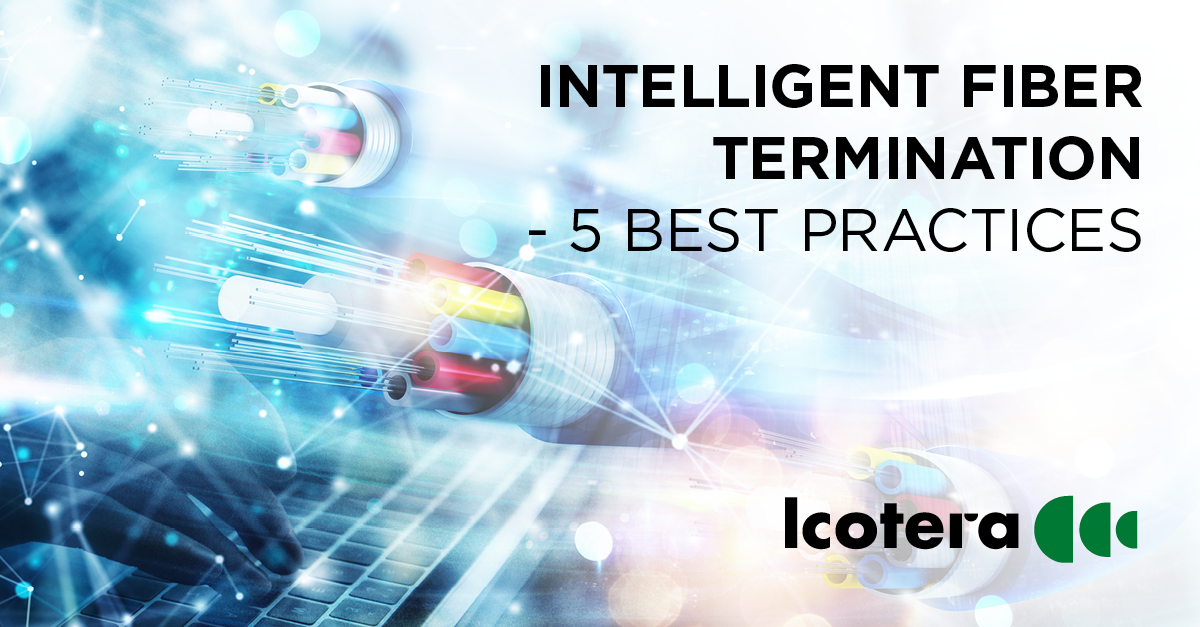Today, an increasing part of the network operator’s revenue runs through fiber, and how you install fiber directly impacts the networks’ performance and profitability. Here are five ways to minimize failure rates – not only when installing fiber to the home (FTTH) but also over the product’s operational lifetime.
As the demand for new telecommunication technologies and services increases steadily, fiber optics technology promises a flexible, reliable, and scalable network platform with potentially unlimited capacity.
A successful fiber network requires a strong infrastructure based on a durable and intelligent fiber cable installation. This directly impacts the network’s reliability, performance, network maintenance, and ongoing operations.
In other words: To realize fiber’s enormous potential in revenue-producing broadband, fiber cables must be connected properly, terminated, routed, stored, and handled.
In this article, we share our five best practices for intelligent and durable fiber termination.
1: Leave the protective end caps on
Fiber is extremely sensitive to contaminants like dust particles, liquids, and other dirt, and one of the most overlooked aspects of fiber installation is keeping the fiber endfaces clean.
Therefore make sure to leave the protective dust caps on until the fiber cables are routed, as they protect the most sensitive part of the fiber. If you do not leave the caps on, it can directly impact the overall network performance, resulting in a slowdown or complete shutdown. This results in higher failure rates and additional costs for service technicians.
2: Avoid pinching and over-bending the fiber
Just as fiber is sensitive to contaminants, it is also sensitive to stress, especially over-bending and pinching. In fact, one of the most common damages in the installation process is broken or cracked fiber.
Even though the fiberglass is designed to be flexible, do not over-bend the fiber as fibers bent beyond the specified recommendations are more likely to break. The same goes for pinching and pulling the cable too hard. By mishandling the fiber cables, the chance of failures and service visits increases dramatically, and you risk ruining your expensive fiber investment.
3: Route the cables in an intuitive FTU
A successfully installed fiber network can be measured in many ways: minimum installation and operational costs, maximum system uptime, and no lost revenue due to mishandled fiber or even the number of years the installation runs without having to be updated or replaced. Achieving this requires an intuitive fiber management solution that includes cable routing paths with bend radius protection and, of course, physical protection.
However, fiber deployment varies from country to country as regulations, fiber infrastructure, and traditional procedures differ. Some markets – such as Germany – are moving towards a more direct fiber approach, where they make a direct connection from the fiber to the router. But in the UK, Scandinavia, and many other places in Europe, the most common approach is to use a two-box solution with an ONT and a Wi-Fi access point. This way, you can easily replace the Wi-Fi access point without interfering with the fiber installation leading to a lower cost over time as any intervention with the fiber could result in a need for a truck-roll to ensure that the fiber installation is intact and clean. Regardless of which fiber approach you use, a fiber termination unit (FTU) is relevant in all cases where cable tv (CATV) is needed.
With Icotera’s FTU, you can say goodbye to cable mess. The solution guides the service engineer through the installation process with ease and shows him exactly how to route the cables correctly. An intuitive setup that reduces failures and speeds up the installation process. At the same time, our experience is that the right installation stays untouched for years or even more than a decade.
4: Leave the fiber cables in a safe space
When the fiber is routed and connected, it is essential to keep the cables in a safe and non-accessible space to prevent the end-user from tampering with the fiber cables themselves.
Unlike other solutions that use a vulnerable "twist", Icotera's FTU uses a vertical slide-on mechanism that ensures that the active gateway is 100 percent aligned with the connectors as soon as the active gateway is connected to the FTU.
After installation, the vertical slide-on mechanism uses gravity combined with an automatic locking mechanism to keep the gateway in place, even in situations where the FTU and gateway are subjected to rough treatment, which can often be difficult to avoid.
5: Minimize the training required
Staff costs are one of the significant expenses in the installation budget, and the pressure to install reliable and cost-effective fiber quickly increases as fiber infrastructures continue to expand at a rapid pace.
Here too, Icotera’s FTU is an obvious choice if you, as a network operator, do not want to depend on specific competencies to terminate the fiber correctly. The solution is easy to use and will ensure consistent, high-quality installations that can be implemented quickly.
It is important to mention that not everyone can terminate fiber. If you want fiber installation to become a revenue-driving and lasting success, it is extremely important that your team understands what they are doing, that they can work around technical issues, and that they provide an excellent service.
---------------------------------------------------------------------
![]()
Want to know more about how you can lower your TCO when terminating fiber?
Please reach out to Technical Program Manager, Jens Bundgaard at jbu@icotera.com
----------------------------------------------------------------------

